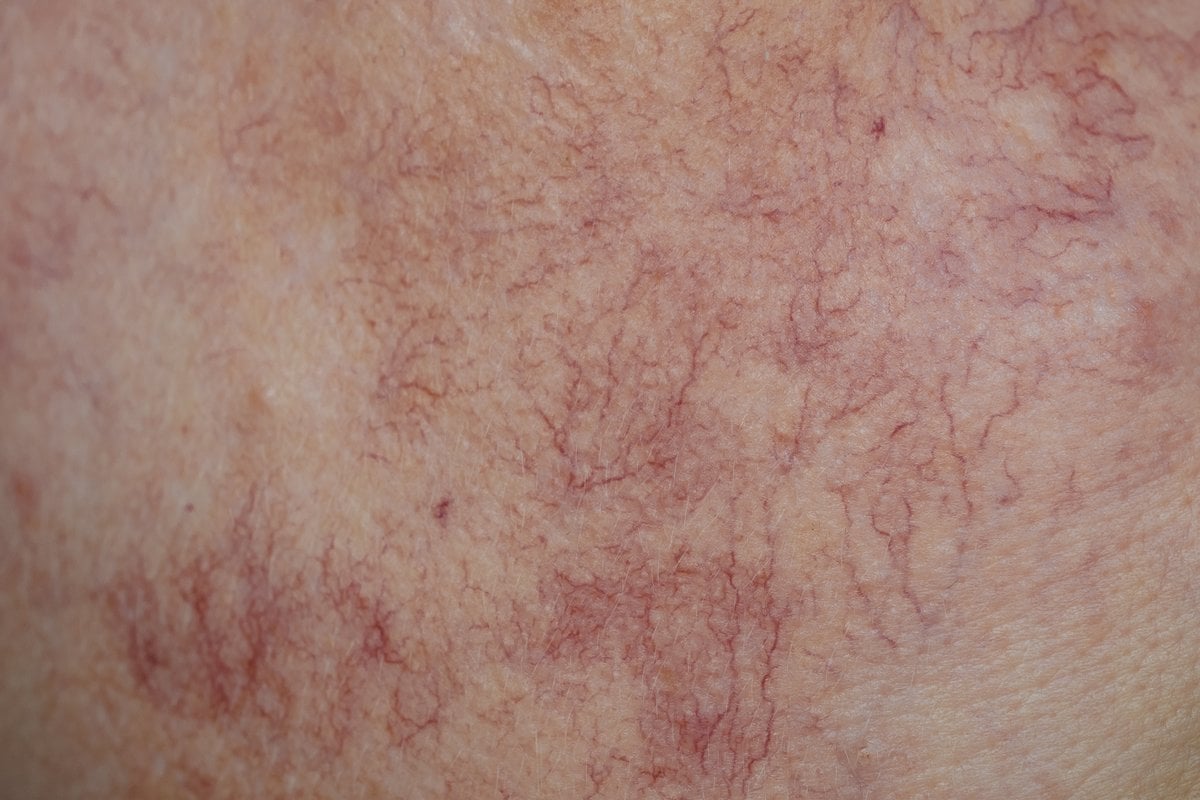
So, you're having a little up-close squiz at your face in the magnifying mirror, patrolling your skin for pimples, blackheads and such - and then suddenly... face veins. A spider-like web of 'em. All around your nose. Having a time.
If you've ever dealt with spider veins (also known as 'broken capillaries' and the science-y name 'telangiectasia'), you'll know it can be frustrating.
That splotchy redness is a fickle thing to camouflage and stubborn as hell to get rid of - just not a fun time for all involved.
Watch: Here are seven ways to improve your skin while you sleep. Post continues below.
But what exactly are face veins? And why have you suddenly been blessed with them?
To find out, we asked medical director Dr Glenn Murray from Absolute Cosmetics everything we need to know, including what to do if they're bothering you and you want to treat them.
What are face veins?
First up, this is a pretty common thing - it's not just you and your 65-year-old uncle who have them, so don't freak out!
But what actually are face veins? Well, those red blotches are basically broken or enlarged blood vessels that are pretty much just hanging out beneath the surface of the skin.
Top Comments